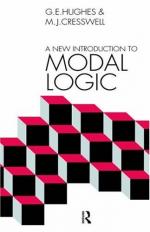|
This section contains 4,532 words (approx. 16 pages at 300 words per page) |

|
Traditionally, the modes implicit in modal logic are the modes of truth and ultimately the modes of being: necessary, possible, impossible, and contingent. While the study of the formal properties of those notions is still an important part of modal logic, other interpretations have been added over the years, such as temporal, epistemic, and deontic. Furthermore, more recently, other formal languages have been suggested, which, although not modal logic in a strict sense, are closely related to it, such as dynamic logic.
Brief History
Modern modal logic began in 1912 when Clarence Irving Lewis published a paper in Mind, in which he recommended that the logic of Principia Mathematica be supplemented with what he called intensional connectives. Among the latter was a binary connective of strict implication for which he introduced a new symbol, a "fishhook" to distinguish it from the "horseshoe" of the material conditional. Thus...
|
This section contains 4,532 words (approx. 16 pages at 300 words per page) |

|


